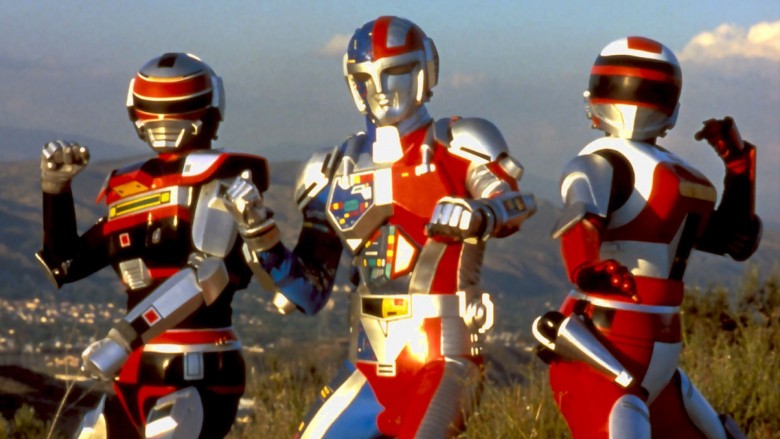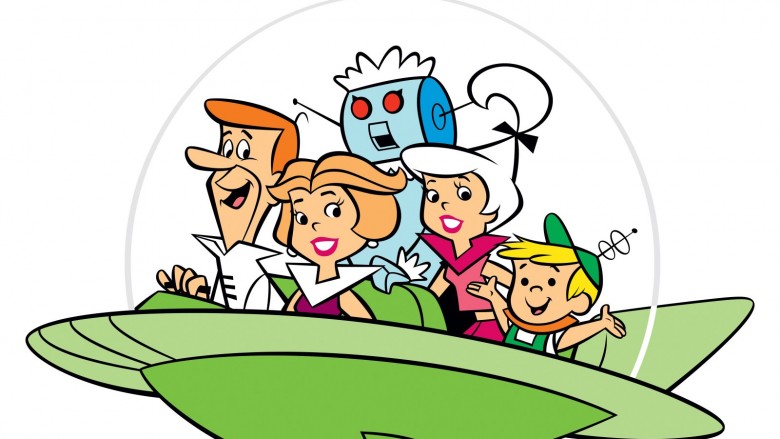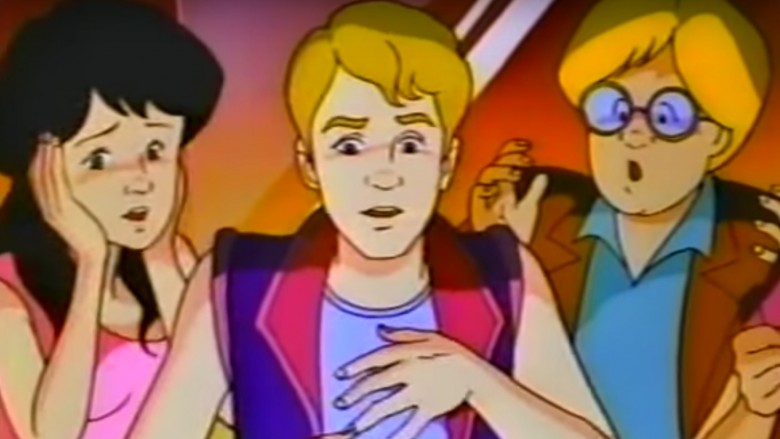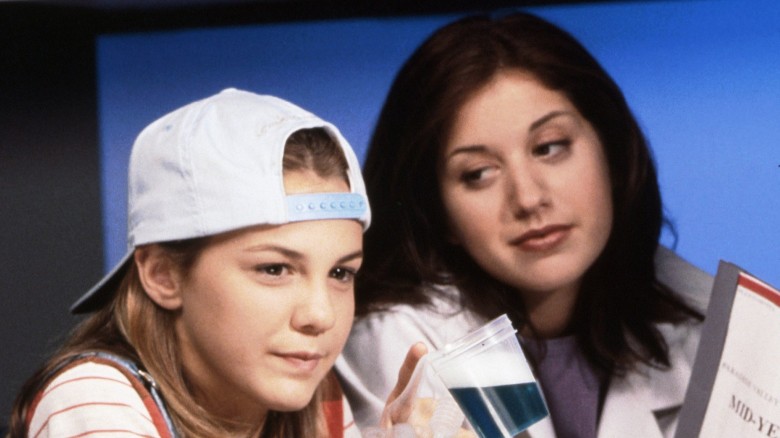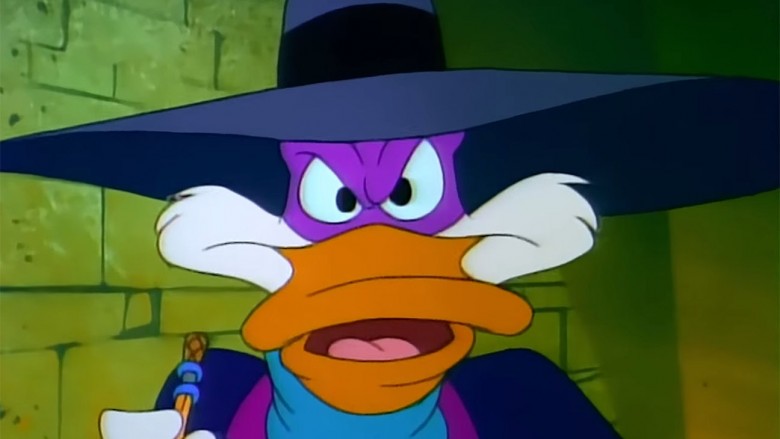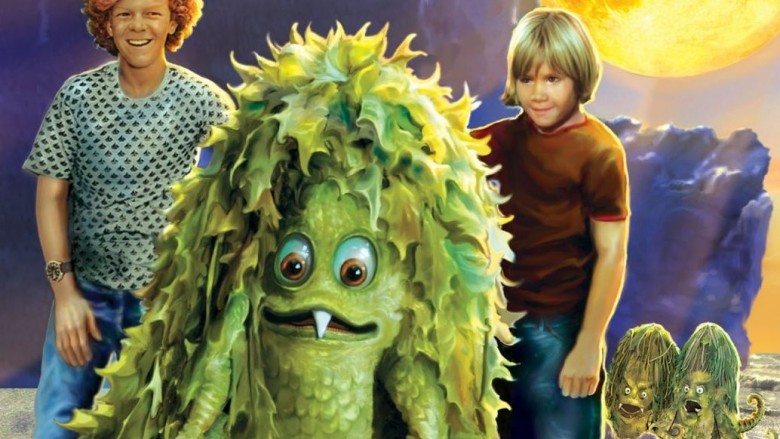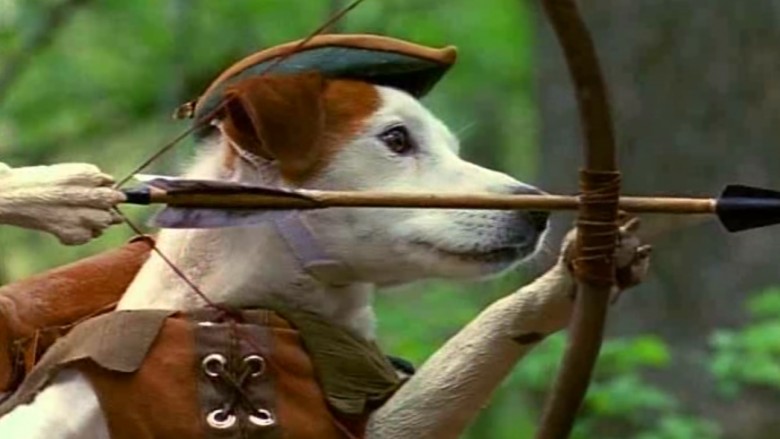Children's Shows That Could Be Blockbuster Franchises
The long-running, cheap-looking, recycled-footage-heavy kids' show Mighty Morphin Power Rangers is back—in the form of the big-budget, frankly awesome-looking Power Rangers movie reboot. It's got us thinking: how many other TV shows of the past—particularly ones made as cheaply and as quickly as possible for a largely undiscerning audience of children—also have the potential to be a box office blockbuster, or even a film franchise? We've got some suggestions.
Ghostwriter
We've already seen two Ghost Rider movies starring Nicolas Cage as the frequently on-fire motorcycle-riding Marvel Comics hero. But we haven't seen the similar-sounding (and very different) Ghostwriter. Airing on PBS from 1992 to 1995, the show was educational in that it taught young viewers how to read better through skills like sounding out unfamiliar words and word-building—but it did so through the adventures of a ghost that could manipulate physical manifestations of letters and words for a bunch of human kids in Brooklyn. A ghost bending the physical world as it messes around in Brooklyn? It's like Ghostbusters meets The Warriors.
The Jetsons
Let's be honest—The Jetsons was really just The Flintstones with all of the jokes about rocks and stones replaced with ones about space and the future. But they made a couple of live-action Flintstones movies, and the time is right to see the dazzling sci-fi utopia of The Jetsons on the big screen, populated by real people. A primetime cartoon in the '60s and a revival in the '80s means at least two generations of Americans grew up with George Jetson, his boy Elroy, daughter Judy, and Jane, his wife. Get an actress who can speak with a Brooklyn accent to voice Rosie the Robot, draw up a CGI Astro, and we're in business. (And a mention of why everybody lives in towers and drives flying cars would be nice—is the ground covered in mountains of trash, like in WALL-E?)
Kidd Video
This part live-action, part animated series ran on NBC Saturday mornings from 1984 to 1985, following the adventures of a very '80s live-action synth-pop garage band who got whisked away to an (animated) fantasy world and did battle with the villainous Master Blaster in a realm called the Flipside (always followed by a Monkees-esque music video). A Kidd Video movie could similarly combine live action and animation, placing real actors in an animated world. And filmmakers could take a cue from The Brady Bunch movies (connected to Kidd Video by cast member Robbie Rist, who played the Bradys' Cousin Oliver), and have the band completely unaware that it's stuck in the wrong era.
The Secret World of Alex Mack
A franchise about a tween with magical powers? Yeah, it just might work. Alex Mack far predates Harry Potter, however, debuting on Nickelodeon in 1994. But it's got enough elements of mystery, science fiction, and YA fiction tropes to stand on its own. The plot: Alex Mack is a normal girl living in an idyllic town...until a truck from a nearby chemical plant douses her in a weird substance. As a result, Alex gets a bunch of superpowers (e.g., telekinesis, the ability to turn herself into water) and the series deals with her learning what those newfound gifts are and how to use them, often to little avail. (The whole thing also works nicely as a metaphor for the hellishness of adolescence.) One other great thing about Alex Mack is that it's one of the rare sci-fi properties to feature a female protagonist as well as a female villain in chemical company CEO Danielle Atron.
Darkwing Duck
The world was very different in the '90s. For example, there weren't very many superhero movies, and the ones that did get made were kind of cheesy, like Batman Forever and The Phantom. Fortunately, TV had fans of cool, sort-of-dark superheroics covered with Batman: The Animated Series (well represented by Christopher Nolan's Batman movies) and Disney's Darkwing Duck. A superhero parody (so many duck puns) that was still a good superhero series in its own right, it concerned the crimefighting alter ego of mild-mannered Drake Mallard. A CGI Darkwing Duck movie could allow this fondly remembered Disney Afternoon staple to ride the nostalgia train all the way to box office gold.
Eerie, Indiana
They should make an Eerie, Indiana movie if only to make things right with the universe—this 1991-1992 show was way ahead of its time. Were it to debut now, it would be, at the very least, a cult hit. Airing in early primetime on NBC, this tongue-in-cheek series was like Twin Peaks or The X-Files...but for kids. Viewers discover that things are not quite right in the aptly named titular small town alongside teenage protagonist Marshall Teller (Omri Katz of Hocus Pocus). Among the goings-on in Eerie, any of which could be expanded to a full 90 minutes each: Elvis is alive and well, Bigfoot is real, dogs are planning to take over the world, Tupperware can extend human life, and transplanted organs are haunted.
Sigmund and the Sea Monsters
Really, any of the far-out 1960s and '70s TV series by Sid and Marty Krofft in which actors wore huge, psychedelic costumes could be made into movies—H.R. Pufnstuf or Lidsville, for example. But Sigmund has the most big-screen eye candy potential. The plot of the 1973-1975 Saturday morning series is about a couple of kids who hide a sea monster named Sigmund in their clubhouse—disowned by his family because he isn't scary enough. Movies could focus on the boys comically failing to hide Sigmund from their parents (and the authorities), Sigmund emerging from hiding and having literal fish-out-of-water adventures and he adjusts to life on land, or even Sigmund's human friends visiting his undersea world. A Sigmund movie would have a natural home at Amazon Studios, where a revival of the series (starring David Arquette) debuted in 2016.
Dungeons and Dragons
There's already been a movie based on the characters and concepts from the classic tabletop game Dungeons and Dragons, released to little notice in 2000. That's why somebody in Hollywood should make a movie on the surprisingly creepy and unsettling Saturday morning cartoon (which was, of course, based on the classic tabletop game). On the 1983-1985 series, a bunch of kids take a ride on a roller coaster which transports them into the D&D realm, where an actual Dungeon Master gives them magical talismans to fight an evil wizard named Venger. Bonus of a movie spinoff: closure. The show was canceled without a proper finale, so it would be nice to see if those kids ever got back home.
Wishbone
Wishbone was a delightful educational series that ran on PBS in the mid-'90s. In every episode, an adorable Jack Russell terrier named Wishbone would imagine himself at the center of the action of a classic novel. It introduced kids to books (and probably provided more than a few test answers, CliffsNotes style). But the series was only 30 minutes long, so the literary action always felt rushed. A series of Wishbone movies could give the classics of literature—as seen through the eyes of a hyper-intelligent dog—the attention and time they require.
James Bond, Jr.
There was a six-year gap between the end of Timothy Dalton's run as superspy James Bond with 1989's License to Kill and the start of the Pierce Brosnan era with 1995's GoldenEye. The only onscreen Bond property during that time was a 1991 syndicated cartoon series called James Bond, Jr. Despite the name of the show and its main character, James Bond, Jr. was actually the nephew of 007, a teenager attending a prestigious prep school. With his gadget-making friend IQ (the grandson of gadget-master Q of the Bond movies), Bond is always hard at work taking down a criminal organized called S.C.U.M., or "Saboteurs and Criminals United in Mayhem." Perhaps the next direction of the big-screen James Bond franchise isn't swapping out Daniel Craig with another British actor, but reinventing it completely by going the James Bond, Jr. route and placing fresh young actors at the helm.
M.A.S.K.
In the '80s, there were quite a few kids' shows that were little more than 30-minute ads for toys. This doesn't mean they weren't awesome, but Transformers, Masters of the Universe, and G.I. Joe all had one major purpose, and it was to move merchandise. Perhaps the purest example of this trend was M.A.S.K. The series and its toy line from Kenner (which was later bought by Hasbro) were a cross between the best parts of G.I. Joe and Transformers: an elite secret squad (Mobile Armored Strike Kommand) foiled the plots of an evil organization (V.E.N.O.M., or "Vicious Evil Network of Mayhem") through the use of a fleet of normal-looking vehicles that transformed into war machines like tanks and helicopters. But unlike G.I. Joe and Transformers, Hollywood has yet to give us a nostalgia-fueled, $200-million live action remake of M.A.S.K. Or at least not yet—plans for a "Hasbro Cinematic Universe" are under way.
VR Troopers
The number one rule of Hollywood: If it's popular, rip it off. Case in point: the slew of Mighty Morphin Power Rangers knockoffs that hit TV after that show became a cultural phenomenon in the early '90s. They didn't run long, but Superhuman Samurai Syber-Squad, Tattooed Teenage Alien Fighters from Beverly Hills, Big Bad Beetleborgs, and VR Troopers all followed the same basic outline as MMPR: young people fight otherworldly (and low-budget) monsters with special powers and/or technological marvels. If the new Power Rangers movie is a box office hit, any or all of these could be next at the megaplex.
